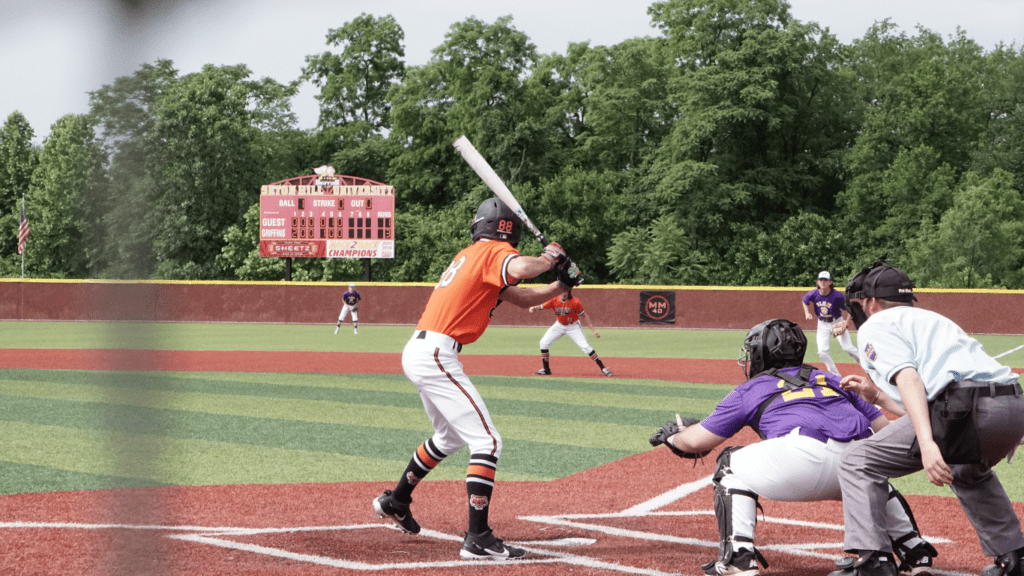Trade #1: Powerhouse Trade Reshapes the Eastern Conference
When Malik Rose, the 11 time All Star and aging franchise cornerstone, pushed for a trade last summer, everyone knew it would shift the axis of the Eastern Conference. The blockbuster move sent him from the middling Titans to the playoff hungry Harbor City Hawks a team stacked with young talent but lacking veteran grit.
The Hawks weren’t interested in a slow rebuild. They knew what they had: explosive scorers, a deep bench, and leadership in need of a voice. So instead of stockpiling draft assets, they went all in. It’s a bet on experience and chemistry, not patience. Meanwhile, the Titans flipped the script. They shed Rose’s contract, leaned into development, and made it clear this year is about finding their future core, not chasing wins.
Early returns? The Hawks opened 8 2, with Malik averaging fewer points but anchoring the defense and stabilizing clutch minutes. Chemistry’s already ahead of schedule. His locker room presence? Noticeable. Younger players are buying in. Meanwhile, the Titans have dropped close games but are running a faster, hungrier lineup. Expect growing pains but also flashes of something promising.
This trade wasn’t just a player move. It was a philosophical fork in the road: reload now or rebuild patiently. One team is eyeing the conference finals. The other is building to stay there five years from now.
Trade #2: Surprise Move from a Small Market Sleeper
The Thunderbirds haven’t made many headlines in the past five seasons steady records, no loud moves. That changed overnight. In a deal no one saw coming, they shipped two bench veterans and future picks for a rising star guard with defensive chops and ruthless transition speed. It’s not just the move itself that raised eyebrows. It’s who made it.
For a franchise known for cautious development and long leashes, this kind of aggression signals something bigger. The front office isn’t waiting for organic growth anymore they’re chasing relevance now. That points to a mental shift: hoping isn’t a strategy, and the West is too deep to play passive.
The ripple could go further. If the new core meshes, the Thunderbirds could follow a familiar arc teams like the ’24 Comets or the ’22 Timberhawks that caught fire by betting on chemistry, not just numbers. Deep playoff runs come from belief, timing, and bold decisions. This move checks all three boxes.
More teams should take notes. Sometimes, quiet doesn’t mean content. Sometimes, quiet is just the deep breath before something loud.
Trade #3: Bold Swap Between Western Rivals
This wasn’t just a trade it was a chess move. When two playoff caliber teams in the West sent key pieces to each other, it raised eyebrows across the league. Both gave up something essential, but each walked away feeling they might have come out ahead. One needed spacing and leadership, the other craved speed and defensive grit. So they traded accordingly. Call it mutual gain, call it cautious war.
From a basketball standpoint, it’s classic ecosystem rebalancing. A sharpshooting vet goes one way, a high motor slasher the other. The strengths they gain fill major holes; the weaknesses left behind were bandaged with role players and system tweaks. On paper, it’s efficient. But games aren’t played on paper.
In the locker room, the aftermath’s been telling. One squad has fully leaned in players talking openly about new energy and smarter rotations. The other? Still figuring out their voice. Chemistry takes reps, and now the clock’s ticking. Neither front office blinked. They believe in the long game. Now the question becomes: who wins when April rolls around?
Watch this matchup when these two meet again it won’t just be a game. It’ll be a verdict.
Trade #4: The Salary Dump That Wasn’t

When the trade first broke, the headlines screamed “cap space grab.” On the surface, it looked like a fire sale offloading a bloated contract to buy breathing room. But zoom in a little closer, and it starts to look more like a blueprint than a bailout.
What seemed like a one sided salary move actually unlocked a bench player with serious upside. Analysts who laughed it off last month are now watching this kid log real minutes and shift tempo games. There’s no swagger here yet, just quietly efficient two way play. He’s not a star. Not yet. But he’s the kind of piece teams regret letting go.
More importantly, the trade hints at a longer game. Front office brass isn’t worried about this season’s optics. They’re stacking flexibility draft options, player development, and a war chest for the next real free agency window. This wasn’t about dumping dollars. It was about finding leverage where no one else was looking.
Trade #5: The Rookie Blockbuster
Sometimes, front offices gamble big. This year, one team sent shockwaves by packaging proven veterans for a rookie who hadn’t played a single NBA minute. That’s not just betting on potential it’s betting the franchise.
Pre draft, scouts were high on the kid’s upside: elite footwork, high IQ, and flashes of two way brilliance. But talk was cautious raw mechanics, questions about motor, and limited experience against top tier talent. Safe to say, no one expected him to be the centerpiece of a blockbuster trade.
Now? The hype’s changed. After the trade, execs are spinning a new narrative: future cornerstone, system ready, face of the franchise material. It’s classic post trade optimism, but it does shift expectations. Fans want him to produce now and that pressure could accelerate or derail development depending on the support system around him.
Across the league, this move sets a precedent. Teams are re evaluating how they view draft equity and unproven talent. GMs might start prioritizing project players with sky high ceilings over safe veterans. But development isn’t plug and play. If you’re a rookie in 2026, the bar just moved higher and faster.
Bigger Picture: The Ripple Effect
The 2026 season is already being shaped by a series of high stakes trades that go far beyond individual roster moves. These deals are redefining expectations across both conferences and signaling a shift in how front offices operate.
Playoff Forecasts Are Getting a Shake Up
Several powerhouse trades have shifted the balance of power, particularly in the Eastern Conference, where one veteran All Star’s move has turned a fringe team into a top seed contender. Meanwhile, out West, rival swaps and small market surprises are tightening the playoff race.
Key impacts on postseason dynamics:
Former bottom tier teams gaining momentum and legitimacy
Depth focused trades improving long term competitiveness
Contenders forced to re strategize against newly balanced opponents
Expect analysts and fans alike to revisit preseason predictions as lineups gel and chemistry settles.
GMs Are Playing Bolder
One of the most striking trends of this season’s trade window is the growing boldness among General Managers. The days of conservative roster maintenance are fading fast. Teams are now:
Willing to gamble on unproven rookies or offbeat role players
Moving big contracts with long term vision in mind
Prioritizing future flexibility over short term fan approval
This fresh wave of front office mentality is injecting unpredictable energy into league development and it’s likely far from over.
More Underdogs Could Rise
If these trades are any indication, the age of the underdog is gaining traction. Smaller franchises that once played it safe are recomposing their narratives with playoff ambition in mind. As seen in recent years, shifting one or two strategic pieces is often all it takes to pull off a Cinderella run.
Teams are looking beyond market size to build impact
Coaching staffs are adapting quickly to new personnel
Role players are stepping up in unexpected ways
Don’t be surprised if more teams defying the odds emerge throughout the season.
The ripple effects of these trades are far from confined to the teams involved they’re redrawing the entire competitive map for 2026 and setting the tone for an era where proactive risk beats passive tradition.
What to Watch Going Forward
The midseason trade deadline is always messy, but 2026 might redefine chaos. Several big names are rumored to be on the move some stuck on underachieving rosters, others seeking a system that fits. Keep your eye on the fringe contenders: the teams one piece away from relevance are often the ones most willing to gamble.
But here’s where the front offices are shifting gears. Flashy, headline grabbing trades don’t always translate to playoff wins. More execs are prioritizing roster chemistry over instant impact. They’re investing in players who complete the puzzle, not just raise jersey sales. Developing synergy not just adding a star is what wins deep in May and June.
Even more interesting is the rise of culture first rosters. Teams that emphasize work ethic, fit, leadership, and buy in are outperforming expectations. Think of organizations favoring solid locker room guys over raw skill. This isn’t just feel good rhetoric it’s becoming strategy. In short: talent’s still king, but character is catching up. The smart money says this will shape how trades happen well into the later half of this decade.




